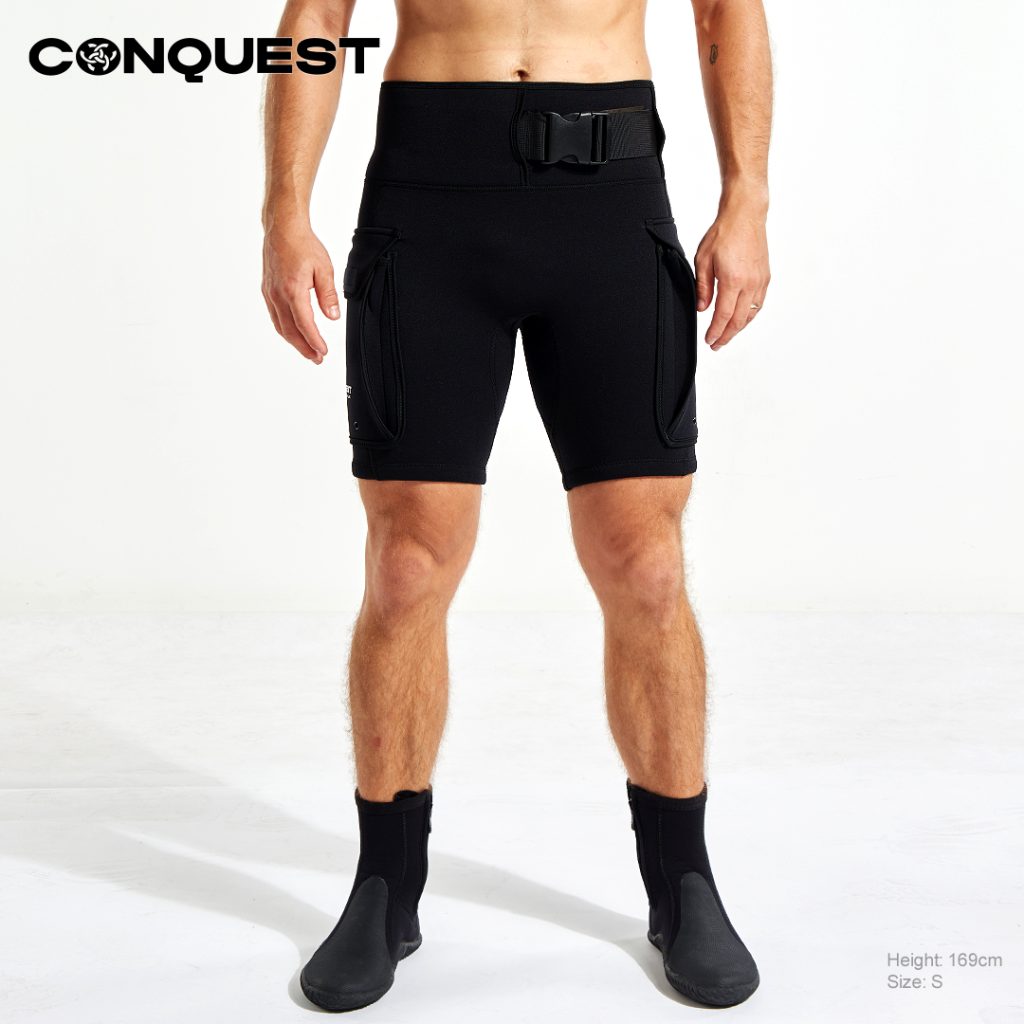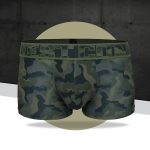Diving into the Depths with Confidence and Courage
Embarking on a scuba diving adventure is not just about the thrill of exploring underwater worlds; it’s also about making smart choices that enhance your comfort and safety. One question that often puzzles beginners is what to wear under a scuba wetsuit. The ideal choices range from specialized diving undergarments to simple swimsuits, depending on personal comfort and the diving conditions.
The Layers Beneath: Choosing the Right Undergarments for Diving

Have you ever wondered what seasoned divers wear under their wetsuits? The answer varies, but it’s essential to wear something that balances comfort, functionality, and the conditions you’ll be diving in, such as rash guards, diving shorts, neoprene vests, or swimsuits.
This article delves into the various options available and the importance of choosing the right undergarments to ensure both comfort and safety during your underwater adventures, guiding you through the essentials of diving attire for an enjoyable dive experience.
With CONQUEST, you’re not just preparing for a dive; you’re gearing up to conquer your fears and dive into the depths with unwavering courage.
Understanding Scuba Wetsuits

Now, what is a scuba wetsuit? Scuba wetsuits, designed to protect and insulate divers, come in various types.
Wetsuits, made from neoprene, provide insulation through a thin layer of water trapped between the suit and the skin. Drysuits seal out the water entirely and are ideal for very cold waters, while semi-dry suits offer a middle ground, limiting water entry but not completely sealing it out.
Each suit type demands different undergarments to optimize diver comfort and safety.
The Role of Undergarments in Diving
You might be wondering why divers wear undergarments under their wetsuits.
Underneath the protective outer layer of your wetsuit lies your secret to comfort and confidence. Wearing appropriate undergarments under a scuba suit serves multiple purposes:
1. Effortless Transition to Post-Dive Activities:

The right undergarment is your ally in smoothly transitioning from sea to land, keeping you ready for whatever lies ahead.
There are a few ways in which wearing something underneath your wetsuit can help with changing.
Dressing strategically under your wetsuit not only enhances comfort during your dive but also streamlines the transition to post-dive plans.
Whether you’re heading for a casual beachside gathering or a more adventurous outing post-surfing, consider undergarments that support swift and discreet changing. This thoughtful choice ensures you maintain your privacy and ease, allowing for a smooth shift from your wetsuit to your next ensemble without any hassle or awkward moments.
Keep this convenience in mind when selecting your under-wetsuit attire, as it significantly eases your post-dive experience.
2. Enhanced Protection for Hands and Feet:

These layers do more than warm; they protect, allowing you to face the varying elements above and below the water with an undeterred spirit.
Divers are not just battling the chill of underwater depths; they face varying air temperatures and breezy conditions above the surface. This dynamic environment necessitates attire that adapts seamlessly, ensuring comfort throughout the dive.
The choice of undergarment material and style—be it a full-body suit, a one-piece, or a two-piece ensemble—is pivotal. It’s about more than just managing body temperature; it’s about movement efficiency. Opting for multiple thin layers instead of a single, bulky wetsuit can conserve energy and enhance mobility, allowing divers to navigate the waters with ease.
Furthermore, these layers are not just thermal barriers. They offer a defence against the sun’s harmful UV rays and act as a buffer against underwater hazards like bites, stings, and abrasions. This added layer of protection ensures a safer and more enjoyable diving experience, safeguarding your skin while you explore the depths.
3. Maintaining Modesty and Decency:

The act of changing in and out of a wetsuit, often in the public eye at busy beaches or on boats, calls for a thoughtful approach to preserve modesty. Given the challenging nature of donning and doffing a wetsuit—compounded by the heat trapped inside, particularly in tropical climates—it’s rarely a swift or discreet process.
Underlying layers such as a snug bathing suit or a lightweight rash guard can be invaluable. These garments provide essential coverage, ensuring you maintain decency while navigating the often awkward task of changing in public spaces. This strategic layering isn’t just about comfort; it’s about affording yourself the privacy and respect you deserve, even as you transition from land to sea and back again.
4. Maximizing Comfort During Your Dive:
The key to a pleasant diving experience often lies in the layers between you and your wetsuit. For those with sensitive skin, or anyone prone to irritation and chafing, this additional layer can make a world of difference. Wetsuits, while essential, can sometimes cause discomfort due to the friction generated between the suit’s material and the skin during extended periods of wear. This is particularly true in areas prone to high movement and rubbing, such as the neck, armpits, behind the knees, and the crotch.
While some divers prefer the freedom of going without any undergarments, this choice can lead to discomfort or even pain from the constant abrasion. A simple and effective way to mitigate this issue is to wear a snug-fitting bathing suit or garments made from smooth fabrics like spandex or lycra. These materials create a barrier that greatly reduces friction alone, thus preventing chafing. As an alternative or in addition, applying anti-chafing gel or cream to sensitive areas can also provide relief. Opting for these solutions ensures that your focus remains on the joy of diving, not the discomfort of what you’re wearing.
5. Upholding Hygiene Standards:
Hygiene is a crucial, yet often overlooked, aspect of diving attire. When donning a rented wetsuit, the necessity for an underlayer becomes even more apparent. The thought of slipping into a suit that may have been worn commando by previous users is far from appealing. However, even for personal wetsuits, hygiene considerations extend beyond mere ownership.
Sweat accumulation, a common occurrence within the confines of a tight wetsuit itself, can create a humid environment conducive to chafing and skin irritation. In more severe cases, this can escalate to skin infections. An underlayer, such as a dive skin or a basic swimsuit, acts as a critical barrier, not just against the wetsuit material but also against external elements like sand. This is particularly important for surfers, who are more likely to encounter sandy water and require extra protection.
Thus, wearing a comfortable swimsuit or swim trunks beneath your wetsuit isn’t just a matter of comfort or modesty; it’s a practical, hygienic measure to protect your skin and ensure a more pleasant and safe diving experience.
6. Optimal UV Protection for Surface Intervals:

For passionate scuba divers who embark on multiple-tank dives, the surface interval is a well-known and vital break. During this break, typically taken on the boat, you have a chance to warm up and recover from the cold experienced in the depths of the water. However, it’s important to note that this break also exposes you to strong sunlight, highlighting the importance of safeguarding yourself from the sun’s intense rays with UV protection.
During these intervals, divers often partially shed their wetsuits to warm up. It’s in these moments that a layer underneath, specifically designed for UV protection, becomes invaluable. Rash guards, especially those with ultraviolet protection, are an excellent choice. They can be worn under the wetsuit during the dive and continue to offer protection on the boat. Alternatively, keeping a dry rash guard on hand to wear under your wetsuit or slip into post-dive can ensure you stay protected from the sun while you relax and recharge for your next underwater adventure. This layer not only guards against the sun but also adds an extra element of comfort, making your surface intervals as enjoyable as the dive itself.
7. Enhancing Warmth with Layering:
In the cooler waters, every layer is a fortress of warmth, a subtle but crucial element in your underwater quest. The concept is simple yet effective: additional layers act as thermal insulation, trapping body heat and providing consistent warmth throughout your dive or surf session.
Opting for multiple lightweight layers as opposed to a single, thicker wetsuit offers dual benefits. It not only keeps you warm but also ensures greater mobility and energy efficiency. Bulky wetsuits can restrict movement and quickly lead to fatigue, whereas thinner, snug layers allow for more fluid motion and less energy expenditure. This approach to thermal regulation ensures that surfers and divers can enjoy their time in the water with comfort, focusing on the experience rather than the cold.
What You Can Wear Under Scuba Wetsuit
Optimal Undergarments for Male Divers:
While the idea of wearing nothing under a wetsuit may appeal to some for its simplicity and comfort, this practice might not always be the best choice for activities like scuba diving and snorkelling. For male divers, there are several practical and comfortable options to consider for under-wetsuit attire:
1. Rash Guard
Shields against chafing and sun exposure.
Perfect for protecting against chafing and sun exposure, rash guards are ideal for keeping your upper body warm and comfortable. Available in various sleeve lengths, they adapt well to different water temperatures and provide a snug first layer beneath the wetsuit.
2. Neoprene Diving Shorts

Ensures comfort and freedom of movement.
Fitted bicycle or diving shorts offer an excellent blend of comfort and freedom of movement. They make getting into and out of a wetsuit more manageable and add an extra layer of warmth for slightly cooler waters. For optimal buoyancy and insulation, select neoprene diving or bicycle shorts.
3. Neoprene Vest
This is a great option for additional warmth, especially in moderately cold waters. It offers core body insulation without the bulkiness of a full suit.
4. Swimming Briefs or Trunks

For minimalists or those diving in warm water, briefs offer a simple yet effective solution. They provide essential protection to wear underneath your wetsuit, particularly when using a rented wetsuit. Look for ones made of thin lycra for lightweight comfort under your wetsuit.
Each of these options caters to different diving conditions and personal preferences, ensuring male divers can choose the best fit for their needs.
Optimal Undergarments for Female Divers:
Female divers have a range of options for undergarments that balance comfort, freedom of movement, and warmth. Here are some ideal choices:
1. Rash Guard
Rash guards are excellent for safeguarding your upper body from chafing and harmful sun rays, ensuring you stay warm and cozy. With a range of sleeve lengths to choose from, they’re versatile enough to suit various water temperatures and serve as a comfortable base layer under your wetsuit.
2. Sports Bra, Bikini, One-Piece Swimsuit
Practical and comfortable.
For those who prefer minimal coverage and maximum mobility, a one-piece swimsuit can be an excellent choice. It’s important to select a swimsuit that’s designed for active use, ensuring it stays in place and provides adequate support.
3. Neoprene Diving Shorts

A balance of comfort and coverage.
Neoprene shorts offer a perfect blend of comfort and extra coverage. Ideal for cooler waters, they provide additional warmth without causing moisture retention or chafing. When choosing diving shorts, opt for materials that offer better insulation than typical swim or training shorts.
4. Sleeveless Vest
Adds warmth without bulkiness.
A sleeveless vest or top, often made from thin, quick-dry fabrics, is a popular choice for female divers who prefer sleeveless tops. It adds warmth without the bulkiness of sleeves, allowing for more freedom of movement around the shoulders and arms. This type of garment with lightweight fabrics is versatile, suitable for both under a wetsuit and as a standalone piece in warmer conditions.
Key Factors to Consider When Choosing the Right Diving Undergarments
Choosing the right undergarments for your scuba diving adventures isn’t just about personal preference; it involves considering a variety of factors to ensure maximum comfort, safety, and practicality.
Here are key aspects to guide your decision:
1. The Weather
If you are diving in a hot and sunny location, it can be a good idea to wear a rash guard under your wetsuit. This way, you can take the top half of your wetsuit down during surface intervals and avoid becoming too hot, while protecting your shoulders and back from the harsh sun. There are many rash guards available on the market, from short-sleeved to long-sleeved, and with various degrees of sun protection.
Select warmer layers for colder climates.
2. Activities
Match undergarments with the physical demands of the dive.
Different water sports and activities require different levels of mobility. For instance, snorkelling might require less insulation than deep-sea scuba diving.
3. Water conditions
Opt for thicker materials in colder waters.
The water temperature is also a primary factor. Colder waters necessitate layers that provide additional insulation, whereas, in warmer waters, minimal undergarments may suffice.
4. Prioritizing Ease of Movement:
The undergarments you select to wear beneath your wetsuit should complement and enhance your aquatic activities, not restrict them. It’s crucial that your choice facilitates not just comfort, but also the freedom and flexibility necessary for effective movement, especially in activities like surfing.
5. Emphasizing Hygiene in Your Undergarment Choice:
Hygiene plays a pivotal role in deciding what to wear under a wetsuit, similar to the rationale behind wearing underwear under everyday clothes. An undergarment like a swimsuit, shorts, or a rash guard acts as a protective barrier between your body and the wetsuit. This layer is not just for your comfort; it’s also about maintaining the cleanliness and longevity of the wetsuit.
Maintenance and Care for Your Scuba Wetsuit and Undergarment

Proper maintenance and storage are essential for preserving the quality and extending the life of both your scuba wetsuit and the undergarments worn with it. Here are some key steps to ensure optimal care:
- Rinse After Each Use: Always rinse your wetsuit and undergarments in fresh water after each dive. This removes salt, chlorine, and other residues that can degrade the material over time.
- Thorough Cleaning: Follow specific washing instructions for your wetsuit and undergarments. Use a mild detergent and avoid harsh chemicals. Some wetsuits and fabrics may require hand washing to prevent damage.
- Drying Properly: Before storing, ensure that your wetsuit and undergarments are completely dry. Hang them in a shaded area with good airflow. Avoid direct sunlight and high heat sources, as these can cause the material to degrade faster.
- Correct Storage: Store your wetsuit and undergarments in a cool, dry place. Avoid folding them to prevent creases and material stress. Ideally, hang your wetsuit on a wide hanger designed for wetsuit storage to maintain its shape.
- Regular Inspections: Regularly check your wetsuit and undergarments for signs of wear and tear, such as stretching, tears, or seam damage. Early detection of issues can prevent further damage and extend the lifespan of your gear.
- Avoiding Contamination: After cleaning, store your wetsuit and undergarments separately from items that might contaminate them, like oily or dirty gear.
By adhering to these maintenance and care practices, you can significantly increase the longevity and performance of your scuba wetsuit and undergarments, ensuring many more comfortable and safe dives.
Ensuring Your Dive Gear Fits Perfectly: Conquer Your Fear of Discomfort
In the world of diving, the tight fitting and proper fit of your undergarments transcends mere comfort—it’s your steadfast ally in conquering the fear of discomfort and ensuring your safety. Ill-fitting gear isn’t just a minor inconvenience; it can potentially lead to discomfort, or even in extreme situations, hypothermia. Stay vigilant, conquer your fear of discomfort, and make the necessary adjustments to the loose fit of your gear for a dive experience that’s both safe and exhilarating.

The decision of what to wear under your scuba wetsuit is as crucial as selecting the wetsuit itself. This choice goes beyond personal comfort; it’s essential for ensuring safety, enhancing performance, and maximizing the enjoyment of your diving experience.
To seamlessly bridge the gap between the underwater world and the vibrant life on shore, consider the innovative beachwear offerings from MODZ. Our meticulously designed swimming trunks, available at the COMO, embody the spirit of “Move Into Action.” Perfect for those who thrive on adventure both below the waves and on the beach, these trunks promise not just exceptional comfort and durability but also stylish versatility. Whether you’re diving deep into the ocean’s mysteries or simply enjoying a sun-soaked day on the sand, MODZ beachwear ensures you’re always ready to move into action.
For a wide range of high-quality scuba wetsuits and beachwear that cater to your specific needs, dive through the COMO website. Discover our collection and find the perfect fit to elevate your underwater adventures and beach escapades alike.










